panorama
The turning of the tide : Bengal's Performance Art Week at a glance
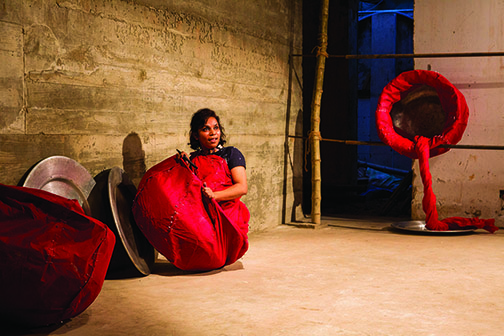
Two centuries ago Kant raised a question: who are we now? The answer led us to the meditation on 'historical presence', as Michel Foucault later observed. In the artistic realm, similar interrogation perhaps led to the investigation of 'presence' in relation to the corporeal body, which was recently given a free rein in the Performance Art Week under the Visual Arts Programme of Bengal Foundation. Seeking to take a comprehensive look at the role of performance art in the contemporary scene in Bangladesh, the event signaled an attitudinal change in mainstream art circles vis-à-vis contemporary praxes. The organizers claimed to have set an appreciative eye on the multiple complexities of this ephemeral medium through staging of performances, discussions and exhibitions in a sequence.
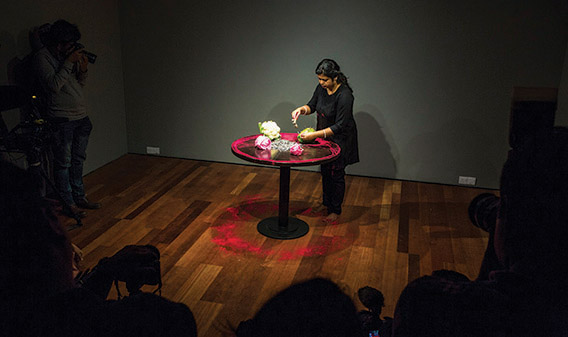
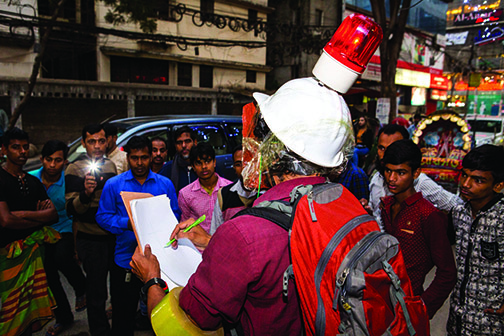
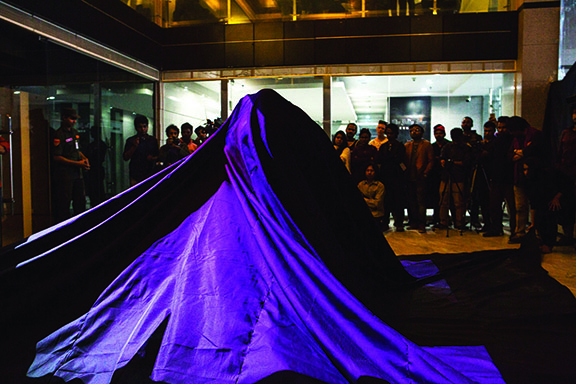
The Performance Art Week can thus be seen as Bengal's first attempt at an ethnographic study – one that lasted from 27 to 30 December 2016, featuring 20 performance artists from various parts of the country. The primary concerns were centered on '[h]ow do artists materialize this non-material art,' and 'how does this medium contributes to the evolution of new languages?'
The participants, selected from responses to an open call, explored a range of contemporary paradigms to bring to the fore perspectives on social-political-cultural issues as well as issues of identity, urbanity and femininity seen from collective and personal positions.
Palash Bhattacharjee's Marked and Jewel A Rob's Eternal Moments: Numbness were reflections on urbanity. The theme appeared in Joydeb Roaja's work Prajanma Kalpadrup O Anudrum to satirically expose the dark sides of ongoing urban developments. In a different vein, Sumana Akter's work Five Minutes For Sundarbans, framed as a silent protest against the Rampal coal power plant project to be set up near the Sundarbans, takes up hours of slow-mo scenes by the artist.
Hasna Hena Porosh's performance I Have to Run; I Don't Know How to Stop and Meherun Akter's Self Conversation both relayed their personal experiences in the societal context. The most pervasive form of ego-massaging was apparently raised by Sharker Nasrin Toontoon – her performance Selfie depicts how projecting ourselves on social media is gradually making us unable to differentiate our subjective schemas from physical realities. In a different vein, a similar theme of socially-psychologically benumbing a phenomenon is tackled in Brahma Akhon Ghumaitachen by Niloofar Chaman. Her work traversed certain chapters of the Mahabharata where Lord Brahma is asleep when the whole world is burning. A counterpoint to this is to be found in Atish Saha's An Invisible Man, in which the issue of political abduction and forced disappearance is played out in a slow unfolding of a morbid presentation where the artist remained tied inside a gunny sack.
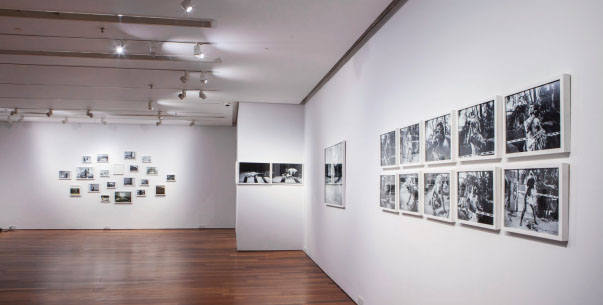
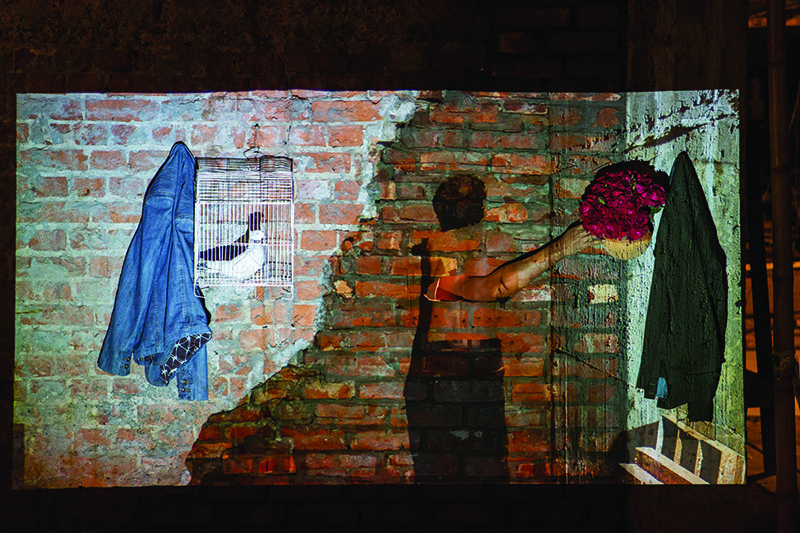
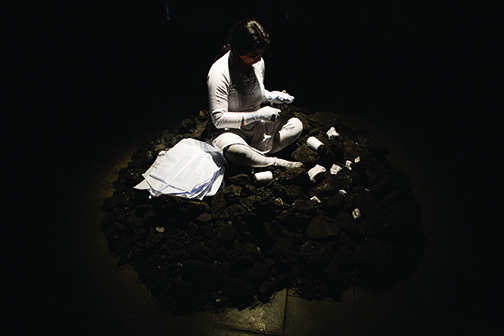
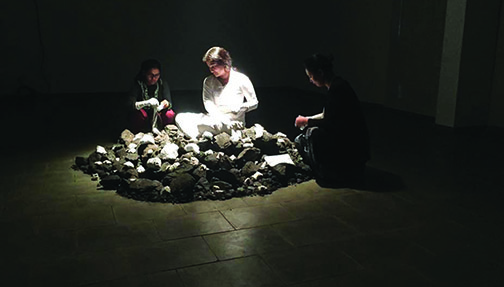
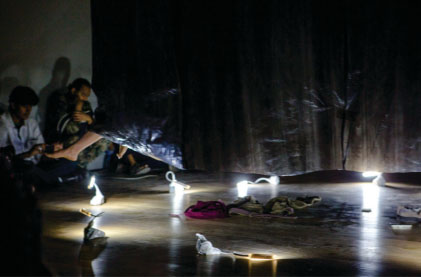
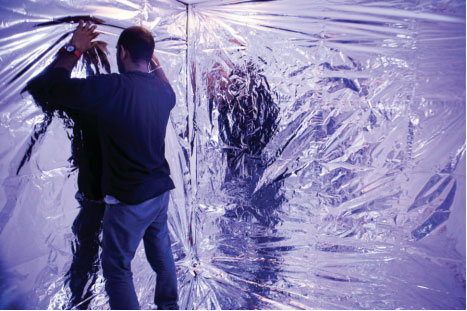
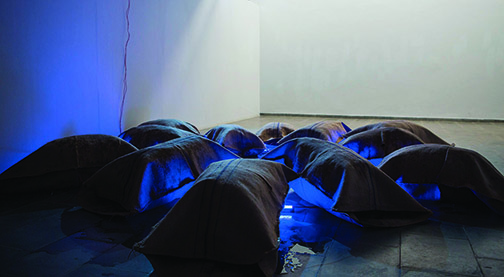
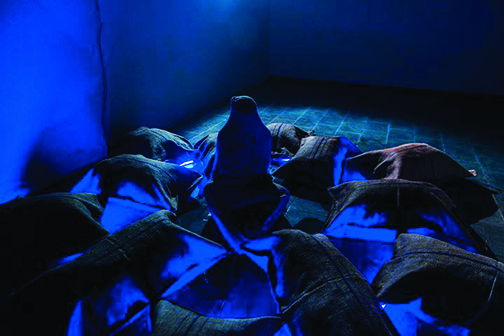
Photos: Sayed Asif Mahmud
Sanjoy Chakraborty, in his Blood, Nation and a Speech voiced his thoughts in favour of national unity where he makes all castes and creeds dissolve into one. To delve into issues of femininity, womanhood andchild abuse, Arpita Singha Lopa, Afsana Sharmin Zhumpa and Farah Naz Moon appeared with their pieces entitled Freedom in Femininity, The Feminine and Phenomena respectively.
In A Conversation with Rock by artist Waley Jaff and Cage of Present by Efat Razowana Reya – both performances were symbolic presentation inflected by hope. On a different note, Reetu Sattar's Isn't It Time You Let Me Go conveyed a spiritual message and called for an unburdening of our spirits from our material concerns in a highly financialized society. Ashim Halder Sagor, in Remember to Forget, presented the dual functions of our memory to store and erase traces of certain events and phenomena.
Some artists showed a penchant for self-examination – they questioned the very idea of art or artistic concepts as an artist's property. Sanad Kumar Biswas, Nazia Andaleeb Preema and Emran Sohel lent their skills to such an end. Sanad, a performance artist and a sculptor, through his Artist in a Gift Box lets the audience interact with him. With See Me, See You, Preema addressed interactivity from within a similar premise and let the audience become a part of her performance by making them (re)act spontaneously and respond imaginatively to her cryptic acts. Emran, on the other hand, staged a three-day long act entitled Announced and Unannounced, capturing images of objects/spectators. He allocated the penultimate day to placing those photographs into an automated mortar maker while he roamed the streets making 'blind drawings' with his eyes covered with chunks of a brick. He also interacted with actual street canvassers who sell cheap medicines to the effect that left one wondering: what is the difference between real life performances or acts and the artists' performances staged as a generic form of art?
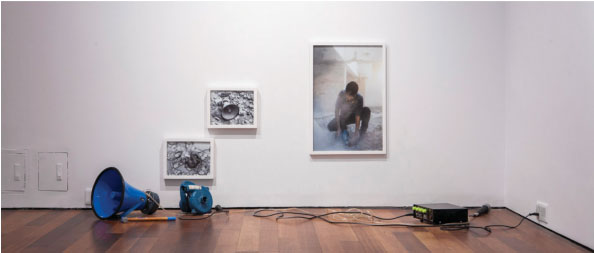
As a sequel to the Art Week, an exhibition entitled Ephemeral: Perennial put together video and photographic documentations of all the performances at two of their premises – the Daily Star-Bengal Arts Precinct and Gyantapas Abdur Razzaq Bidyapeeth. It is in these sites that the organizers' mission to examine 'what role does it [performance] play in cultural and political activism as opposed to white-cube spaces?' could be revisited.
The exhibition was jointly curated by artist Mahbubur Rahman and Tanzim Wahab, and ran its course between 6 January and 25 February 2017.
- ALL IMAGES’ COURTESY OF BENGAL VISUAL ARTS PROGRAMM



















